
How to Use XL 6009 Boost Module: Examples, Pinouts, and Specs
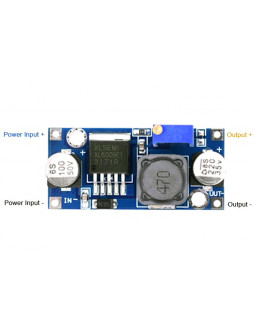
 Design with XL 6009 Boost Module in Cirkit Designer
Design with XL 6009 Boost Module in Cirkit DesignerIntroduction
The XL6009 Boost Module is a high-efficiency DC-DC adjustable step-up (boost) converter designed to increase a lower input voltage to a higher output voltage. It is based on the XL6009 regulator chip and is capable of driving a load with higher voltage requirements. This module is commonly used in applications such as powering LED strips, motors, and other electronic devices that require a voltage higher than the available source.
Explore Projects Built with XL 6009 Boost Module
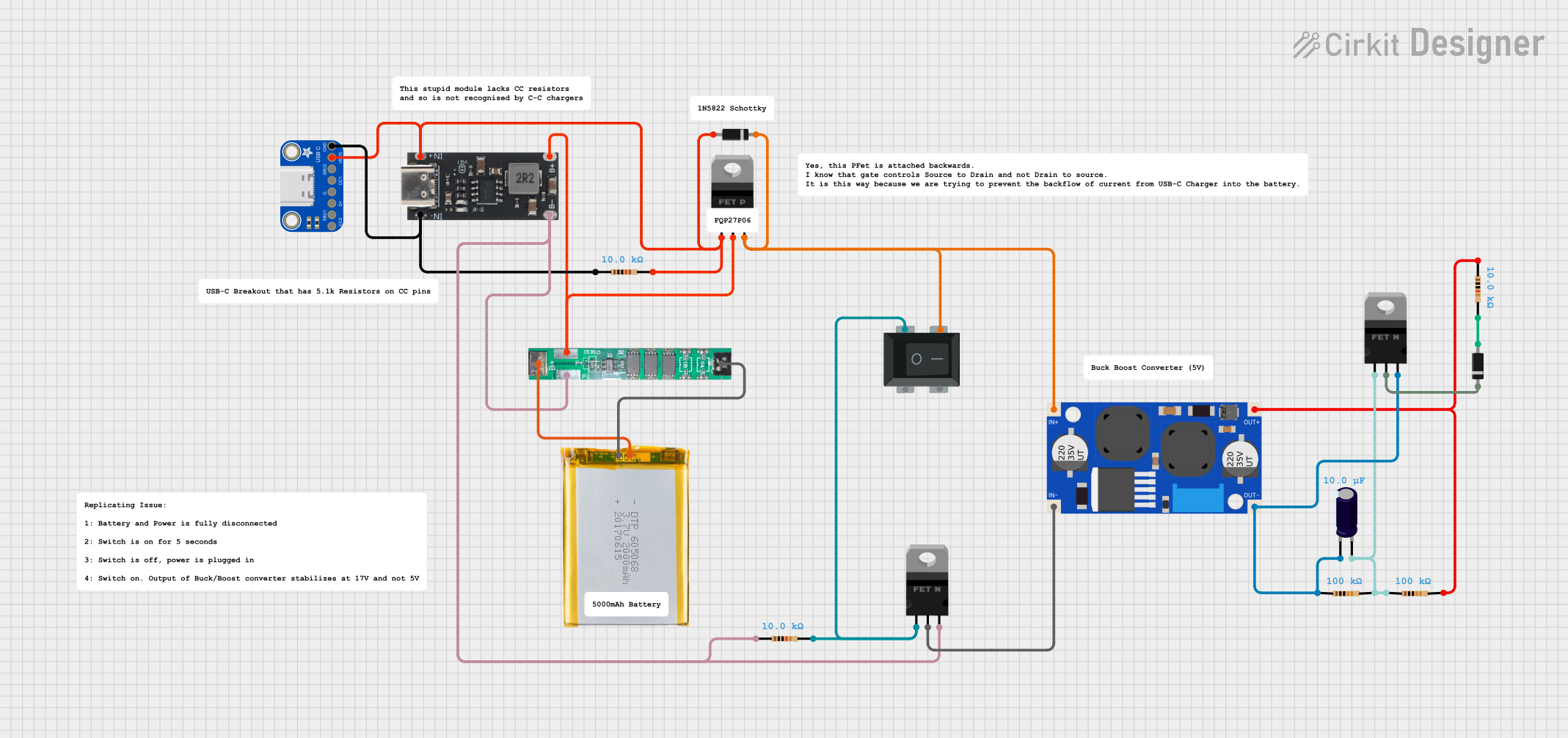
 Open Project in Cirkit Designer
Open Project in Cirkit Designer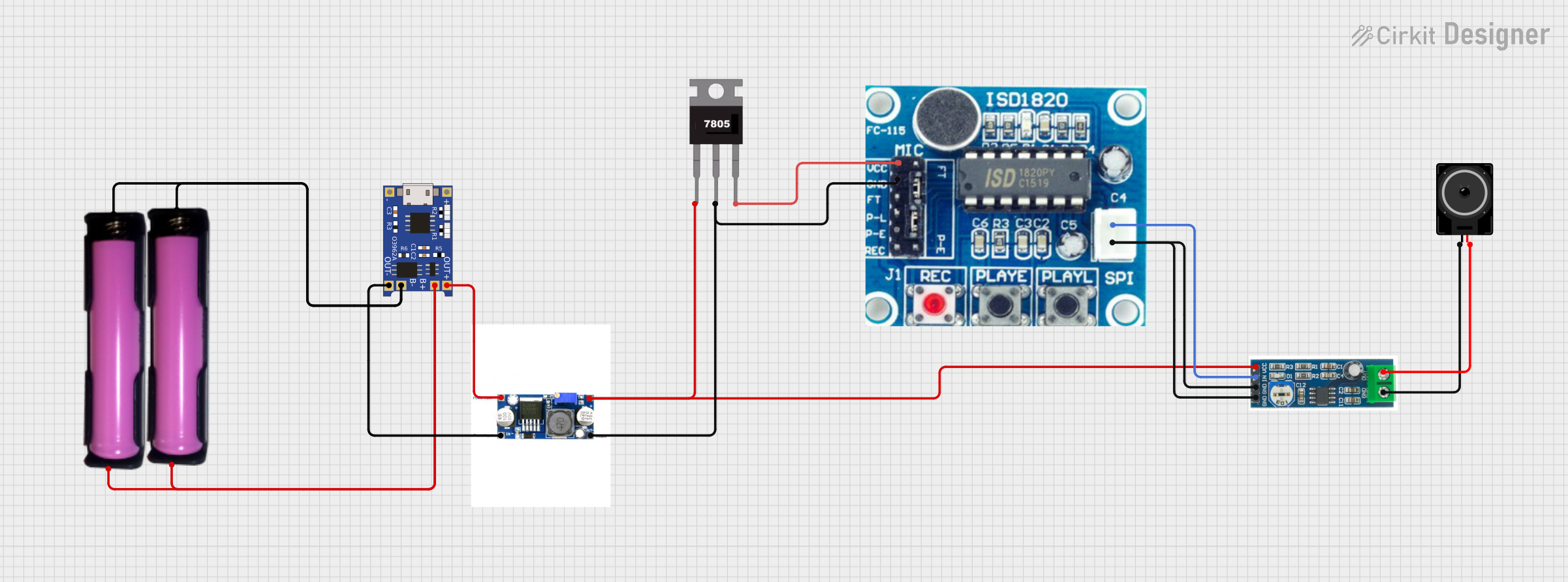
 Open Project in Cirkit Designer
Open Project in Cirkit Designer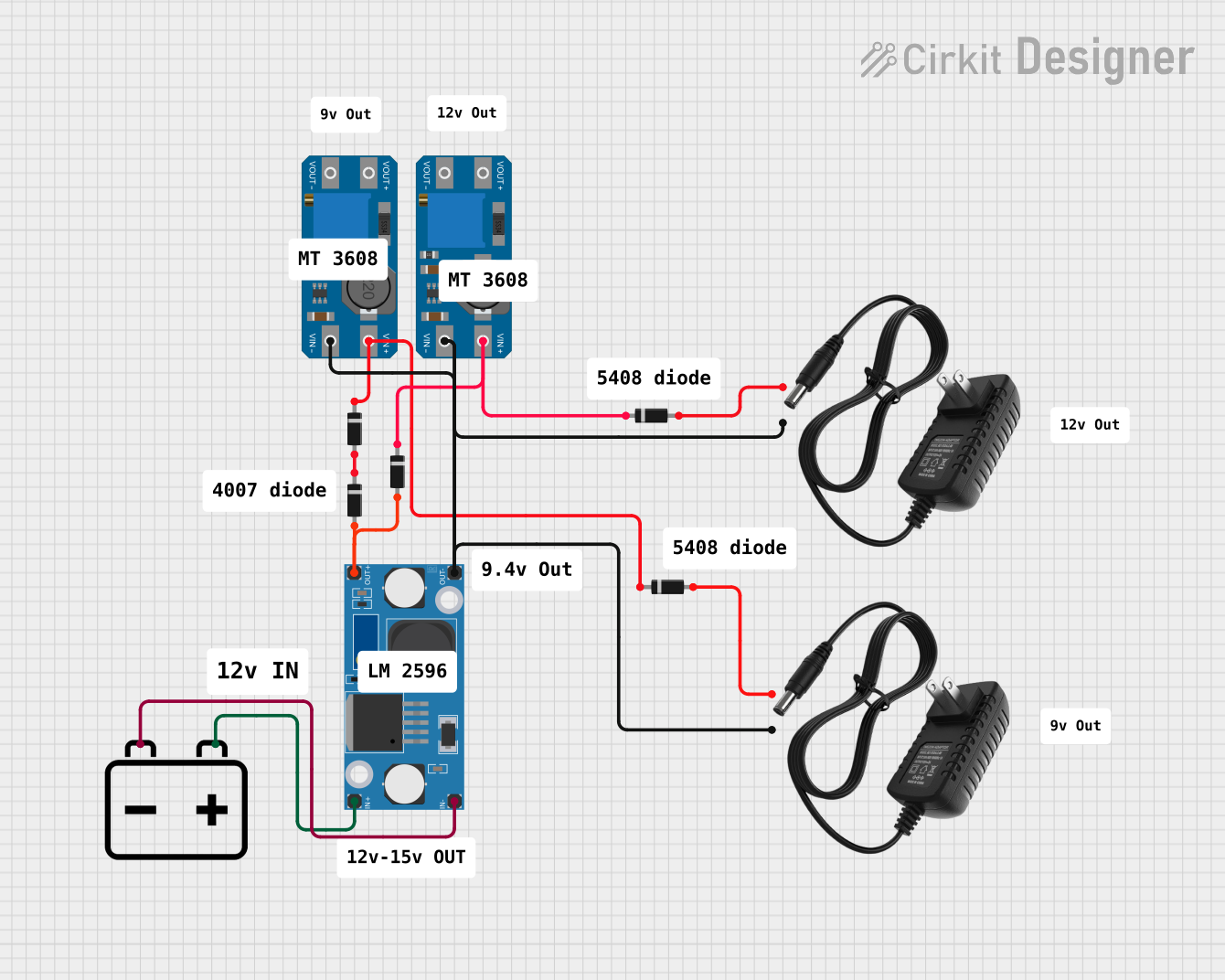
 Open Project in Cirkit Designer
Open Project in Cirkit Designer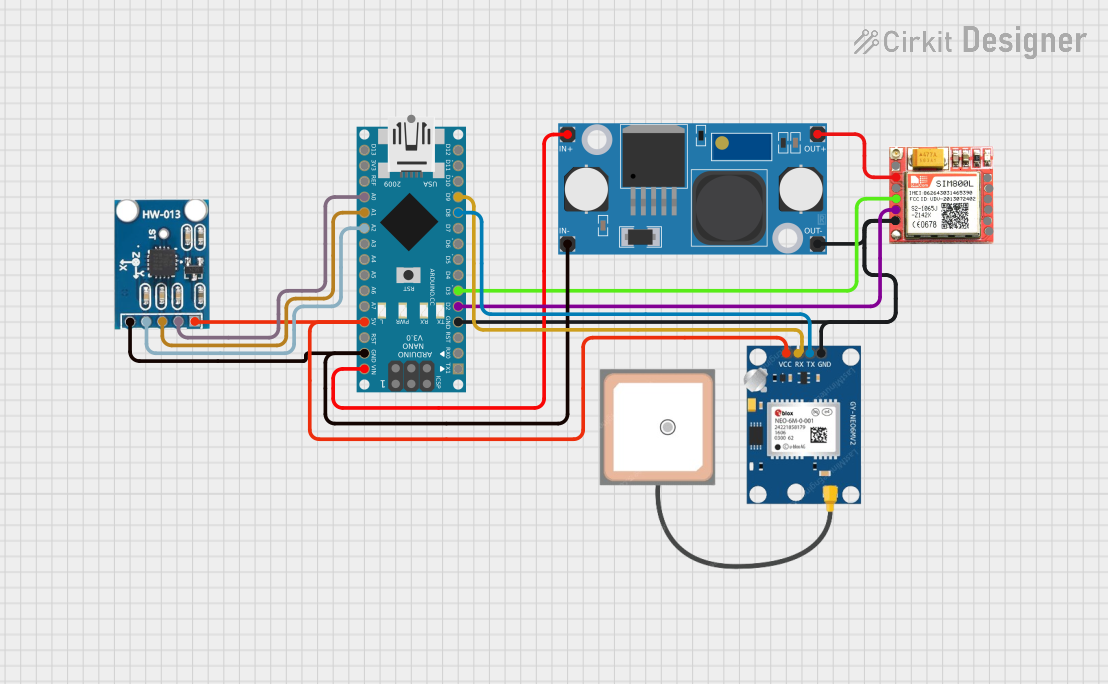
 Open Project in Cirkit Designer
Open Project in Cirkit DesignerExplore Projects Built with XL 6009 Boost Module

 Open Project in Cirkit Designer
Open Project in Cirkit Designer
 Open Project in Cirkit Designer
Open Project in Cirkit Designer
 Open Project in Cirkit Designer
Open Project in Cirkit Designer
 Open Project in Cirkit Designer
Open Project in Cirkit DesignerCommon Applications and Use Cases
- Powering 12V or higher LED strips from a lower voltage source
- Boosting battery voltage to run 5V, 9V, or 12V devices
- Providing adjustable output for prototyping and experimentation
- Solar-powered systems where the input voltage varies
Technical Specifications
Key Technical Details
- Input Voltage Range: 3V to 32V
- Output Voltage Range: 5V to 35V (adjustable via onboard potentiometer)
- Maximum Output Current: 4A (peak), recommended 2.5A for continuous use
- Switching Frequency: 400kHz
- Efficiency: Up to 94% (depends on the difference between input and output voltage)
Pin Configuration and Descriptions
| Pin Number | Name | Description |
|---|---|---|
| 1 | IN+ | Input Positive |
| 2 | IN- | Input Negative/Ground |
| 3 | OUT+ | Output Positive |
| 4 | OUT- | Output Negative/Ground |
Usage Instructions
How to Use the Component in a Circuit
- Connect the input voltage to the IN+ and IN- pins, ensuring that the voltage is within the specified range.
- Connect the load to the OUT+ and OUT- pins.
- Adjust the onboard potentiometer to set the desired output voltage. Turn it clockwise to increase and counterclockwise to decrease the voltage.
- Verify the output voltage with a multimeter before connecting sensitive electronics.
- Once the desired voltage is set, the module is ready to power the connected device.
Important Considerations and Best Practices
- Always check the polarity of the connections to avoid damage to the module or the connected devices.
- Do not exceed the maximum input voltage and current ratings to prevent overheating and potential failure.
- Use a heat sink if the module is expected to handle currents near the upper limit for an extended period.
- Ensure that the module is properly ventilated to dissipate heat.
- Avoid adjusting the potentiometer while the module is under load to prevent voltage spikes.
Troubleshooting and FAQs
Common Issues Users Might Face
- Output voltage is not stable or does not match the setting: Ensure that the input voltage is stable and within the specified range. Check the potentiometer and connections for any issues.
- Module overheats during operation: Verify that the current draw is within the specified limits and that the module is adequately ventilated.
Solutions and Tips for Troubleshooting
- If the output voltage is incorrect, re-adjust the potentiometer with a small screwdriver while monitoring the voltage with a multimeter.
- If the module overheats, reduce the load or improve cooling with a heat sink or fan.
- In case of erratic behavior, check for any loose connections or potential short circuits in the wiring.
FAQs
Q: Can I use the XL6009 Boost Module to charge batteries? A: The XL6009 is not designed as a battery charger. It lacks the necessary control features for safe charging.
Q: What is the maximum input current for the XL6009 Boost Module? A: The maximum input current is not explicitly specified, but it should be less than the maximum output current due to efficiency losses. Always ensure the input current is within a safe range for your power source.
Q: How do I know if the XL6009 Boost Module is working correctly? A: Measure the output voltage with a multimeter. If it's within the range you set and remains stable under load, the module is functioning correctly.
Example Arduino UNO Connection Code
// This example demonstrates how to use the XL6009 Boost Module with an Arduino UNO
// to power an external device that requires a higher voltage.
void setup() {
// No setup required for the boost module itself as it is not controlled by the Arduino.
// Just ensure that the module's output voltage is correctly set for your device.
}
void loop() {
// Your code here to interact with the device powered by the XL6009.
// The boost module will continuously provide the set voltage as long as it is powered.
}
Note: The XL6009 Boost Module is not directly interfaced with the Arduino in terms of control signals; it simply provides a higher voltage output from a lower voltage input. The Arduino code is only necessary if you are controlling or monitoring devices powered by the XL6009.